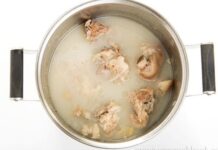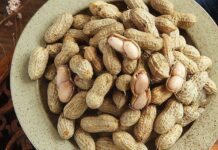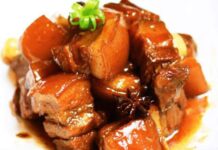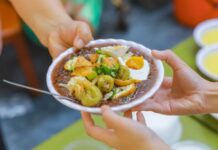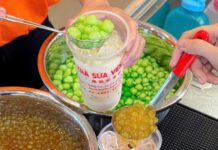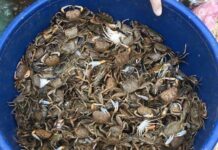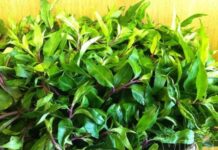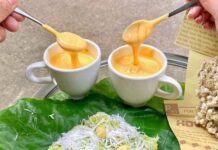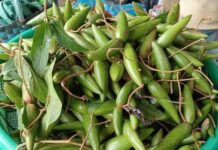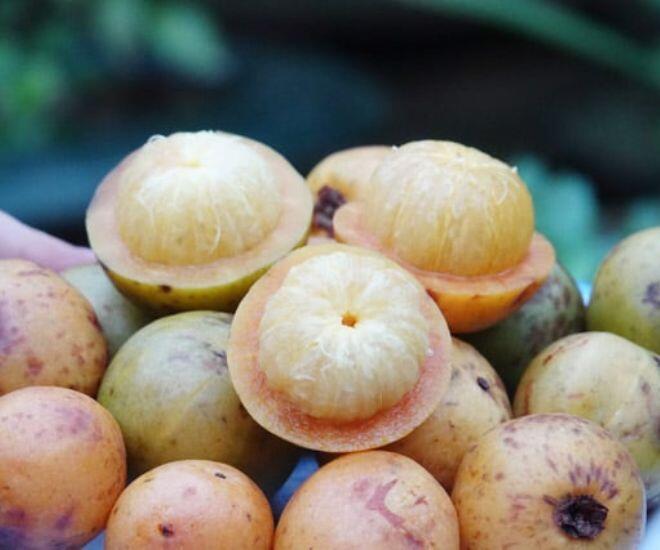
The rambutan-like fruit, known locally as “forest mangosteen,” boasts a round shape with a thick rind that transforms from green to vibrant orange as it ripens. Inside, the juicy segments are both visually appealing and tantalizing. Eaters can neatly slice through the rind with a knife or simply peel it by hand, savoring the sweet and sour flavors that gradually spread across the palate.
Rambutan fruits are categorized into two main types. The first is the tower rambutan, characterized by its large, fleshy, and sweet fruit, similar to mangosteen, typically eaten fresh. The second type is the găng rambutan, smaller with a pronounced sourness, commonly used in cooking, especially in sour soups or infused in alcohol. While not as sweet as the tower variety, the găng rambutan offers a uniquely refreshing sourness that is hard to replicate with other fruits.
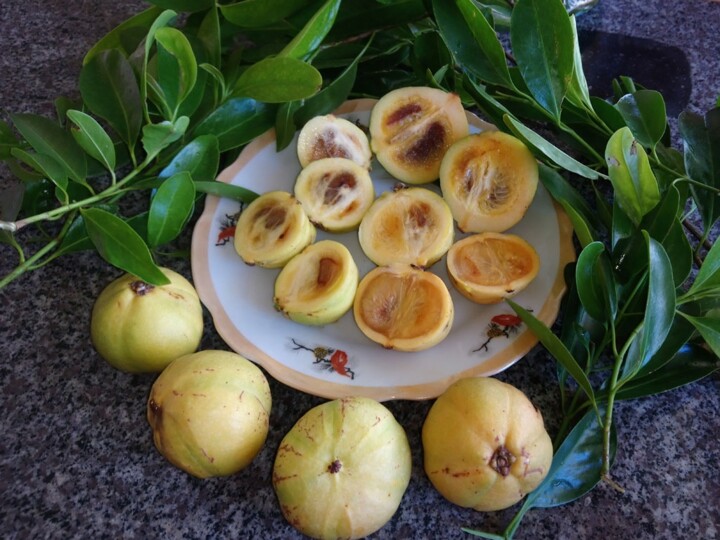
In Quảng Ngãi, locals prepare rambutan in various ways. Fresh, ripe fruit can be eaten immediately, offering a perfect balance of sweetness and sourness that leaves a lasting impression. For those unaccustomed to it, the rind may initially feel astringent on the tongue, but after a few segments, the mild sweetness and refreshing sourness quickly harmonize the taste buds. Beyond fresh consumption, rambutan is a versatile ingredient in daily cooking. Just one or two fresh fruits can elevate a fish soup, making it more enticing. Notably, the island variety, grown in coastal areas, is ideal for seafood sour soups, blending the briny essence of the sea with the mild sourness of the mountains.
Beyond fresh use, Quảng Ngãi residents preserve rambutan for year-round enjoyment. After harvesting, the fruit is peeled, the pulp is halved or quartered, and then sun-dried for one to two days until it darkens and becomes chewy. While dried rambutan may not look appealing, it packs a robust flavor. When added to soups or seafood hotpots, just a few slices impart a refreshing sourness that deepens with prolonged cooking, unlike other sour fruits that can leave a harsh aftertaste.
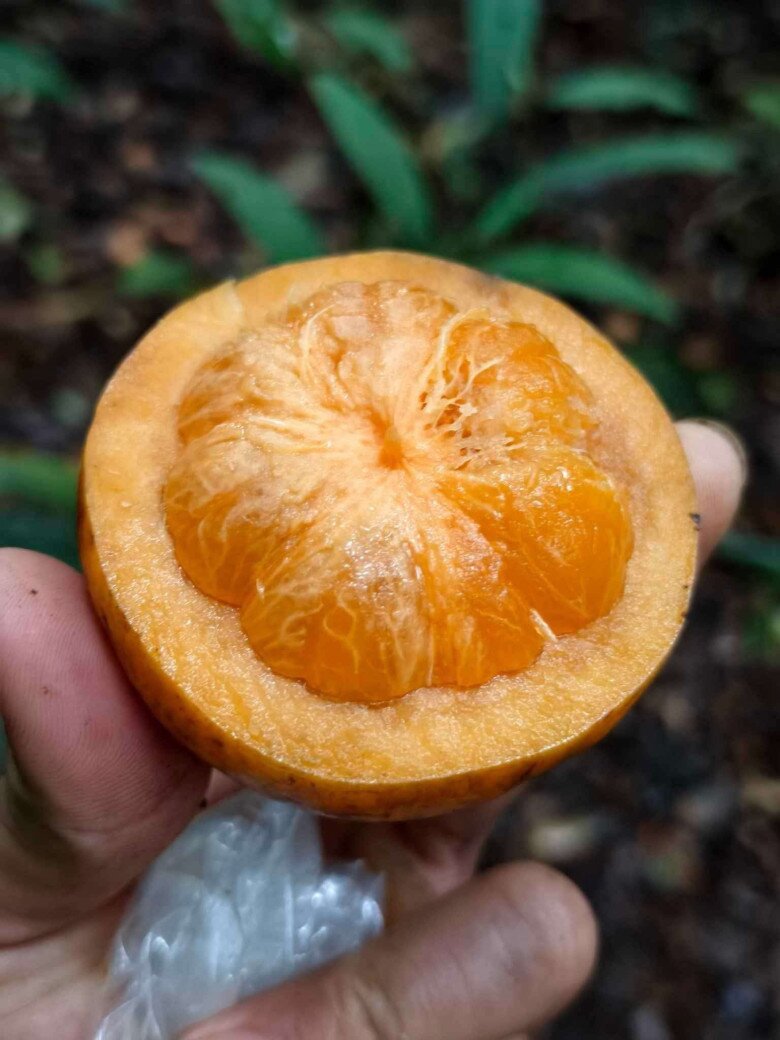
Rambutan season typically peaks around September in the lunar calendar. During this time, vibrant clusters of orange fruit stand out against the green forest canopy, creating a lively mountain landscape. Locals often gather to harvest rambutan, both for personal use and to sell to passersby or send to other provinces. For mountain children, rambutan was a beloved childhood snack. After school, they would climb trees or use sticks to knock down the fruit. The sweet and sour taste of rambutan segments has become a cherished memory for many generations.
Rambutan’s value extends beyond its flavor to its health benefits. Rich in vitamin C, it boosts immunity. Traditional remedies use rambutan to treat conditions like stomach ulcers, allergies, skin irritations, and digestive issues. Thus, it has long been a treasured medicinal plant in Central Vietnam.
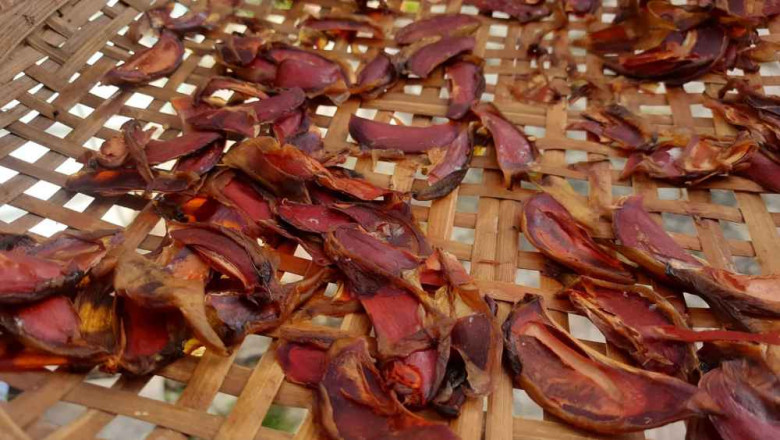
In early autumn, visitors to Quảng Ngãi, especially Trà Bồng district, often encounter street vendors selling fresh rambutan. Prices range from 25,000 to 30,000 VND per kilogram, depending on the season. During peak season, prices drop as supply increases, but growing demand ensures quick sales. In recent years, forest rambutan has appeared on e-commerce platforms at around 40,000 VND per kilogram, catering to consumers far from the region.
Beyond fresh consumption, urban consumers enjoy rambutan in beverages. The pulp can be steeped in sugar to make syrup for natural sweet and sour drinks. Some even infuse rambutan in alcohol, creating a unique beverage. Fans of sour fruits often order large quantities, from 5 to 10 kilograms, for both eating and processing. Some customers pre-order even before the season begins, highlighting the fruit’s allure.
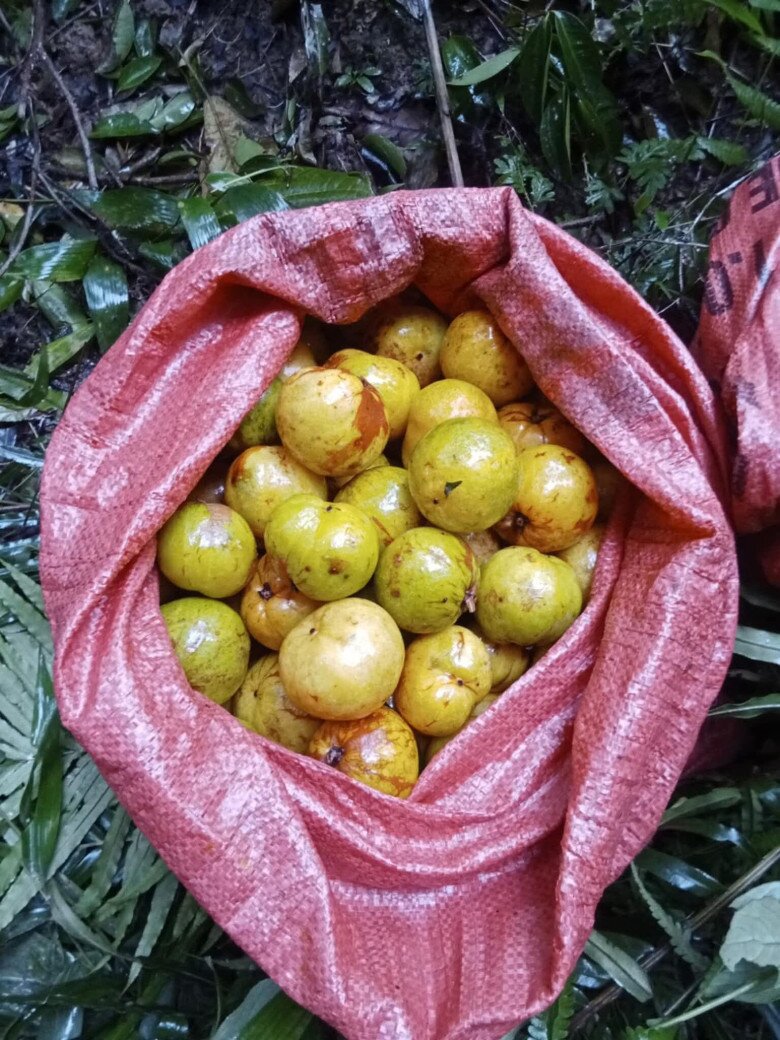
Once a childhood treat, rambutan has become a signature specialty of Quảng Ngãi, promoting the region’s image. Its blend of natural, culinary, and medicinal qualities has garnered increasing attention. Though not as flashy as other fruits, forest rambutan embodies the authentic essence of the mountains, becoming a highlight in Central Vietnam’s culinary exploration.












